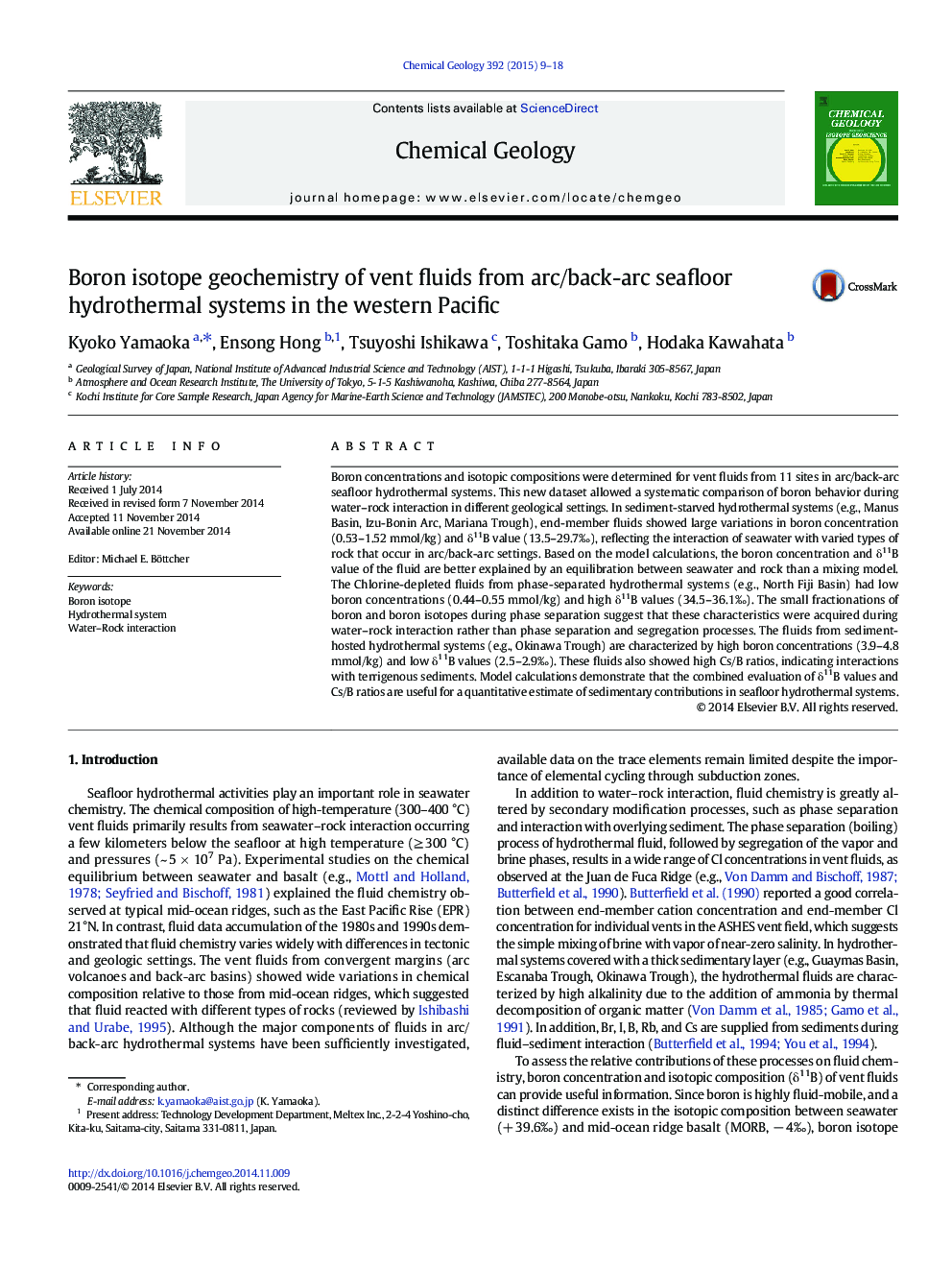| کد مقاله | کد نشریه | سال انتشار | مقاله انگلیسی | نسخه تمام متن |
|---|---|---|---|---|
| 6436534 | 1637580 | 2015 | 10 صفحه PDF | دانلود رایگان |
- Boron content and isotopic composition of hydrothermal vent fluids were measured.
- The boron content and δ11B could be explained by seawater-rock equilibrium.
- Phase separation has little effect on the boron and boron isotope.
- δ11B-Cs/B relationship is useful for estimation of sedimentary contribution.
- This study improved our knowledge on boron behavior during water-rock interaction.
Boron concentrations and isotopic compositions were determined for vent fluids from 11 sites in arc/back-arc seafloor hydrothermal systems. This new dataset allowed a systematic comparison of boron behavior during water-rock interaction in different geological settings. In sediment-starved hydrothermal systems (e.g., Manus Basin, Izu-Bonin Arc, Mariana Trough), end-member fluids showed large variations in boron concentration (0.53-1.52 mmol/kg) and δ11B value (13.5-29.7â°), reflecting the interaction of seawater with varied types of rock that occur in arc/back-arc settings. Based on the model calculations, the boron concentration and δ11B value of the fluid are better explained by an equilibration between seawater and rock than a mixing model. The Chlorine-depleted fluids from phase-separated hydrothermal systems (e.g., North Fiji Basin) had low boron concentrations (0.44-0.55 mmol/kg) and high δ11B values (34.5-36.1â°). The small fractionations of boron and boron isotopes during phase separation suggest that these characteristics were acquired during water-rock interaction rather than phase separation and segregation processes. The fluids from sediment-hosted hydrothermal systems (e.g., Okinawa Trough) are characterized by high boron concentrations (3.9-4.8 mmol/kg) and low δ11B values (2.5-2.9â°). These fluids also showed high Cs/B ratios, indicating interactions with terrigenous sediments. Model calculations demonstrate that the combined evaluation of δ11B values and Cs/B ratios are useful for a quantitative estimate of sedimentary contributions in seafloor hydrothermal systems.
Journal: Chemical Geology - Volume 392, 21 January 2015, Pages 9-18
